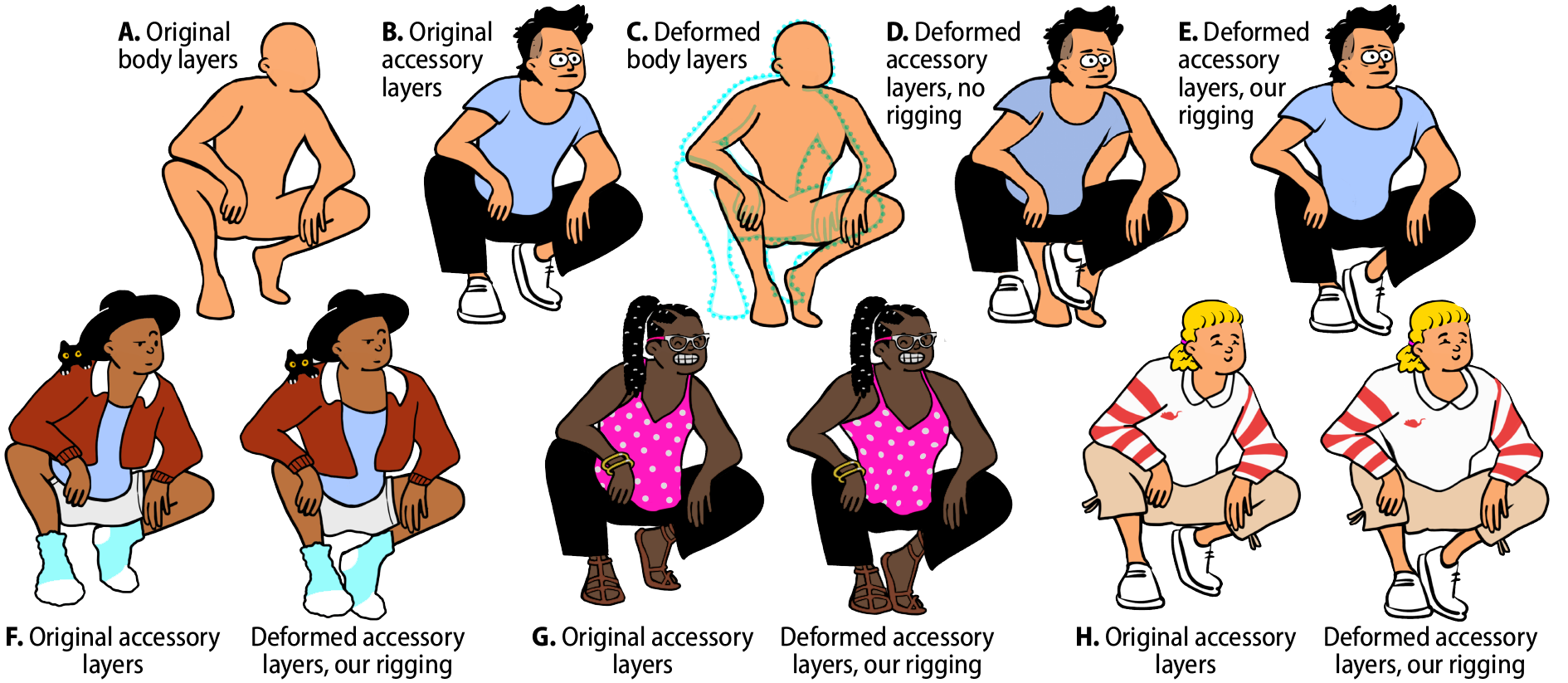Jingyi Li 1, Wilmot Li 2, Sean Follmer 1, Maneesh Agrawala 1
1 Stanford University, 2 Adobe Research
Abstract
Mix-and-match character creation tools enable users to quickly produce 2D character illustrations by combining various predefined accessories, like clothes and hairstyles, which are represented as separate, interchangeable artwork layers. However, these accessory layers are often designed to fit only the default body artwork, so users cannot modify the body without manually updating all the accessory layers as well. To address this issue, we present a method that captures and preserves important relationships between artwork layers so that the predefined accessories adapt with the character’s body. We encode these relationships with four types of constraints that handle common interactions between layers: (1) occlusion, (2) attachment at a point, (3) coincident boundaries, and (4) overlapping regions. A rig is a set of constraints that allow a motion or deformation specifed on the body to transfer to the accessory layers. We present an automated algorithm for generating such a rig for each accessory layer, but also allow users to select which constraints to apply to specifc accessories. We demonstrate how our system supports a variety of modifcations to body shape and pose using artwork from mix-and-match data sets.
